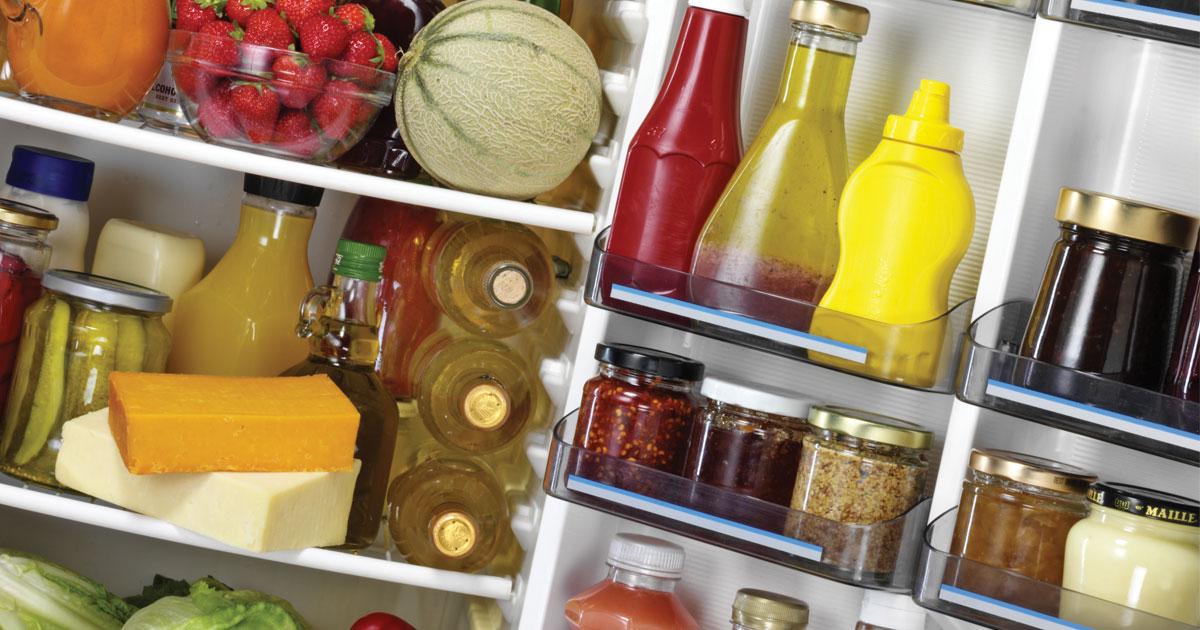Food appears to have just as many rules as the English language! The biggest indecision arrives in canned and jarred foods that open with a sealed popping sound. Vacuum sealed for health and safety reasons, the goal is to kill any bacteria or molds growing fueled by exposure to open air.
The term “refrigerate after opening” is an instruction from preserved food products. The mind tends to play tricks on us, and almost every canned or vacuumed sealed products have a special shelf within the cooled box. If you ever ask the question, “How did so many items end up in my refrigerator?” it’s time to look at the items that can instead occupy a cabinet.
Rule: Items spread or poured, most often, do not require cooling.
- Ketchup: Most restaurants keep bottles of ketchup on tables because it is an acidic food item and has less risk of forming bacteria. Most bottles contain the words “needs refrigeration” only as a precaution, since consumption is not likely after one month. In place of buying the extra-large bottle, consider a smaller size.
- Jams and Jellies: Despite the mixed opinions, some experts suggest water and pH levels support the acidity to foster bacteria growth. The best solution is to look at your brand and follow its recommendation. Shelf-life is typically one-month.
- Mustard: Whether yellow or Dijon, the contents of mustard has enough acid to preserve it for two months without refrigeration.
- Barbeque Sauce: It is safe to store an acidic mixture at room temperature since its primary ingredients are tomato, vinegar, sugar and salt.
- Soy Sauce: A fermented condiment, it has a one-year shelf-life.
- Hot Sauce: If your hot sauce is vinegar-based without the addition of fruits and vegetables, the time-frame is three-years. Even if the color changes color, it will not spoil.
- Oils: While it seems logical to place your preferred oils next to the range, it’s not the best idea. Oils can spoil if exposed to light, heat and oxygen. Unless the oil is nut-based such as walnut and hazelnut, it is best to remove from the refrigerator. The first indication is the liquid will cloud or even harden.
- Peanut Butter: A spreadable item like peanut butter will harden if kept in the refrigerator. Choose a location not exposed to heat, light and oxygen!
- Butter: Four decades ago, it was customary to find a crock of butter on the kitchen table, alongside salt and pepper. Science states, due to its properties of fat, salted butter can last at room temperature for up to two weeks. To enjoy soft butter, consider leaving a day’s worth under a crock. Make sure it is far from heat, light and air.
- Pure Maple Syrup: The moisture content of syrups is immune to bacteria; therefore, it has a difficult time fermenting.
- Honey: Due to a low pH level and the natural process created by honeybees, natural, raw honey is one of nature’s gifts, if sealed. If you have a jar with an expiration date, it may falsely comprise 90% syrups and lack the properties needed to heal and soothe.
Rule: Bread and baked goods are not prone to bacterial spoilage.
Crystallization of the starches occurs when bread chills and changes the composition to brick-hard when chilled. While it has a finite timeframe on a counter, the best solution is to store it in an air-tight container and bag, used within the week, or freeze for long-term storage.
Rule: Sweet treats, especially chocolate, should not be refrigerated.
Ever notice the surface of chocolate extracted from the refrigerator. The color appears “dull.” Refrigeration causes condensation to form on its surface, producing patches. Enjoy the full taste of chocolate, and keep it out of chilling temperatures!
Rule: Putting batteries in the refrigerator does not prolong their charge!
Alkaline batteries self-discharge less than two percent per year if stored at room temperature or 70 degrees. Increase the temperature by 15 degrees, and the statistic increases to five percent annually. To battle the problem, homeowners deferred to refrigeration. Corrosion was one problem created by condensation. And, charging levels dropped once the batteries returned to a room or outdoor temperature. The recommendation is to store all batteries in a cool, dry and non-refrigerated location.
Just imagine all the space you will have after removing selected items from the refrigerator!



















